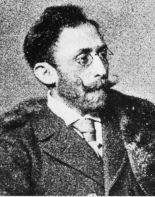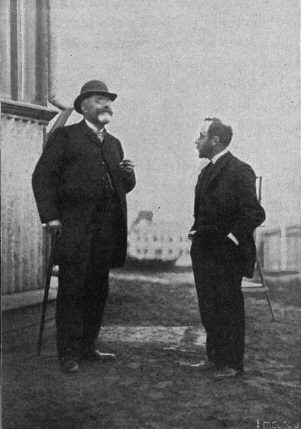<Back to Index>
- Meteorologist Arthur Josef Stanislaus Berson, 1859
- Author Paul Claudel, 1868
- Irish Politician Dónal Ó Conaill, 1775
PAGE SPONSOR


Arthur Josef Stanislaus Berson (August 6, 1859 – December 3, 1942) was a Polish meteorologist and pioneer of aerology who was a native of Neu Sandez, Galicia (now Nowy Sącz, Poland).
After attending the gymnasium in Neu Sandez, Berson studied philology in Vienna. He then studied meteorology and geography in Berlin, where he had as instructors Ferdinand von Richthofen and Wilhelm von Bezold. In 1890 he was an assistant to meteorologist Richard Aßmann at the Meteorological Institute in Berlin. During this period of time he was also secretary of the Deutschen Verein zur Förderung der Luftschiffahrt, the first aeronautical organization in Germany. In 1900 he became Hauptobservator at the newly founded Aeronautics Observatory in Berlin-Tegel, and was later stationed at the Lindenberg Aeronautical Observatory in Beeskow. From 1896 to 1899 Berson was editor of the magazine Zeitschrift für Luftfahrt und Physik der Atmosphäre (Magazine for Aviation and Physics of the Atmosphere).
Berson
is largely known for his scientific hot-air balloon expeditions. On
December 4, 1894 he ascended to a then-record altitude of 9,155 meters
aboard the hydrogen balloon Phoenix. On January 10, 1901, with artillery officer Alfred Hildebrandt (1870 – 1949), he travelled from Berlin to Markaryd, Sweden, in a balloon, thus being the first to cross the Baltic Sea by
air. On January 10, 1902 with balloonist Hermann Elias (1876 – 1955), he
set the German long distance ballooning record, as the two men
journeyed from Berlin to Poltava in the central Ukraine (1,470 kilometers in 30 hours). During
the 1890s he was involved in international "simultaneous ascents" with
balloonists from other nations. These ascents were performed in order
to study variances of climatic conditions
above different locations in Europe, to work to bring about uniformity
in methods of observation, and to create increased cooperation among nations in the new science of aerology. On July 31, 1901, with meteorologist Reinhard Süring, he took his most celebrated ascent. Starting from Berlin-Tempelhof aboard the Preussen, Berson and Süring ultimately reached a height of 10,800 meters above sea level.
At 6000 m. they required compressed oxygen, at 10,000 m. both
scientists were rendered unconscious, and after regaining consciousness
were able to land their balloon near Briesen,
7.5 hours after their flight began. Their record ascent also had
significant scientific importance. Climatic data taken from
simultaneously released unmanned sounding balloons
agreed with the information gathered from the Berson/Süring
ascent. Now scientists such as Richard Aßmann no longer had any
reason to distrust temperature readings taken from unmanned balloons,
which was an important factor that led to the discovery of the stratosphere by Aßmann and Teisserenc de Bort in 1902. Another important aspect of high altitude flight involved physiological problems that balloonists would experience when exposed to conditions at great heights, and Berson assisted physiologists Hermann von Schrötter and Nathan Zuntz with pioneer experiments in aviation medicine. This involved high altitude balloon ascents with the two physiologists, and extensive studies of decompression sickness done with a pneumatic chamber located at the Jüdischen Krankenhaus (Jewish Hospital) in Berlin. Other significant accomplishments by Berson included climatic studies with weather kites off of Svalbard, pioneer meteorological observations from German East Africa, and aerological research over the Amazon Basin.